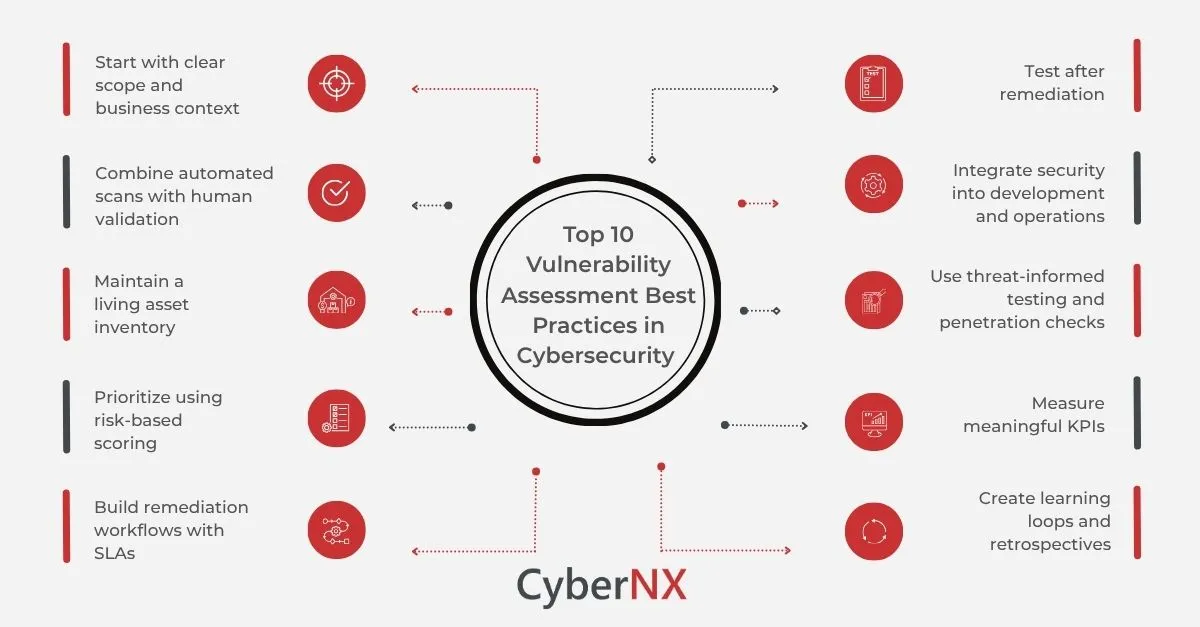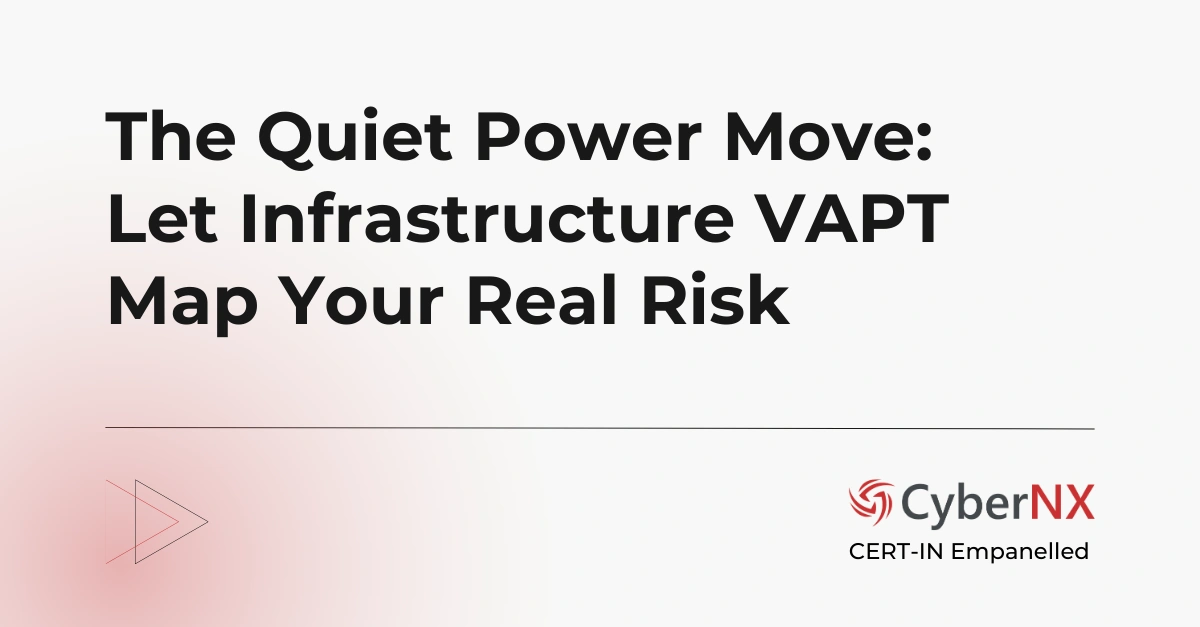Vulnerabilities keep multiplying every year. But time, security budget and people don’t. And that is a challenge every IT leader is facing today. But a well-structured and high value vulnerability assessment exercise can help. It will give you actionable priorities, measurable outcomes and board-ready answers.
With so much material available on the web (unverified), it is important to know the vulnerability assessment best practices. Follow them and you will be able to align security with business goals and prove ROI to executives.
If you are unsure of how assessment helps strengthen security posture, head to our blog Vulnerability Assessment Guide.
In this guide, we’ll walk through ten practical, field-tested best practices that help leaders cut through the noise, build smarter workflows and reduce real-world risk.
Top 10 Vulnerable Assessment Best Practices in Cybersecurity
Discover the top vulnerability assessment best practices in cybersecurity to protect your business from evolving, modern threats. Learn proven strategies used by security testers to prioritize risks, improve defences and build long-term resilience.
1. Start with clear scope and business context
First, you should define what digital assets matter the most. Are they the systems, the data or the processes? Discuss the scope within the team and with security professionals and categorize asset criticality, business impact and regulatory needs. Clear scope means remediation cost go where they reduce real risks.
2. Combine automated scans with human validation
This is vulnerability assessment best practices in action. Automated tools bring flaws into light fast. But they also generate false positives. Therefore, human review is necessary to validate findings, confirm exploitability and produce useful remediation steps. Validation should include a concise proof-of-concept, reproduction steps and suggested fixes that map to local tech stacks. Discuss the vulnerability assessment service provider’s approach.
3. Maintain a living asset inventory
You can’t secure what you don’t know you own. Keep a single source of truth for assets, their owners and exposure. Tag assets with environment, owner and risk tier. Tie vulnerability data to that inventory so fixes end up with the right teams.
4. Prioritize using risk-based scoring
This is vulnerability assessment best practices that save time. There are vulnerabilities which are relevant and others not so much. Use a risk-based model that factors exploitability, exposure and business impact. This approach helps you focus on high-value fixes rather than chasing low-risk noise.
5. Build remediation workflows with SLAs
Create clear handoffs, timelines, and accountability for fixing issues. Track progress in your ticketing system and report monthly to leadership so technical work aligns with governance and budget cycles. Use runbooks and predefined remediation playbooks for common classes of issues to accelerate fixes.
6. Test after remediation
Patching or configuration changes aren’t done until someone confirms the issue is actually fixed. Verify remediations with follow-up scans or targeted retests before closing tickets. For high-risk findings, require sign-off from both security and the owning team.
7. Integrate security into development and operations
This is a core vulnerability assessment best practices principle. Shift left by embedding scanning in CI/CD pipelines and using pre-commit checks where possible. When developers see security during build and test, fixes are cheaper and adoption improves. Pair automated gates with developer training so teams understand why a failure matters.
8. Use threat-informed testing and penetration checks
Adversary-simulating tests at frequent intervals contextualize findings. Plus, they reveal chained attacks that scanners miss. Therefore, combine scheduled assessment with targeted pen tests for high-risk systems. Use threat intelligence to tailor tests toward likely attacker techniques for your specific industry.
9. Measure meaningful KPIs
Track time-to-remediate for critical findings, percentage of critical assets scanned and recurring issue rates. Metrics must drive decisions. Share concise executive summaries with the board and technical dashboards with teams to keep everyone aligned.
10. Create learning loops and retrospectives
After major discoveries or incidents, run a short retrospective: what worked, what failed, and what process changes are needed. Capture lessons and update your playbooks. Continuous improvement will make future assessments faster and more effective.
Conclusion
Vulnerability assessment best practices are less about tools and more about discipline: scoping deliberately, validating thoughtfully, prioritizing by risk, and baking security into everyday workflows. For leaders, the payoff is calmer operations, clearer budgets, and measurable reductions in risk.
Start with one change this quarter – a living asset inventory or a risk-based prioritization – measure the impact, and use that result to build momentum and secure executive buy-in. Contact us today for vulnerability assessment services.
Vulnerability Assessment Best Practices FAQs
How often should vulnerability scans run?
Scan frequency depends on risk. High-exposure systems and internet-facing assets deserve daily or weekly checks; internal or low-risk systems can be monthly. Combine continuous scanning for critical assets with scheduled full scans.
Should we buy a scanner or use managed services?
If you have mature security ops and in-house expertise, tools plus internal validation may work. For lean teams, managed services provide expertise and consistent execution. Consider total cost of ownership, staffing, and time-to-value when making this decision.
How do we handle third-party or SaaS vendor vulnerabilities?
Use contractual requirements, shared responsibility models, and vendor security questionnaires. Monitor vendor security advisories and CVE feeds and treat vendor-facing integrations as part of your attack surface.
Can vulnerability assessments replace penetration testing?
No. Vulnerability assessments are broad and automated, while penetration tests simulate attacker creativity to chain weaknesses. Both are complementary in a mature security program, schedule pen tests after major releases or architecture changes.






